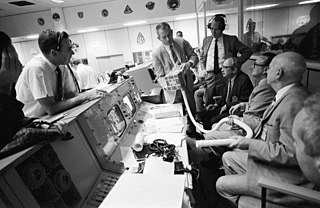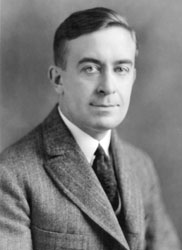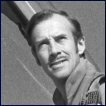
Roger Bruce Chaffee was an American naval officer, aviator and aeronautical engineer who was a NASA astronaut in the Apollo program.

JATO is a type of assisted take-off for helping overloaded aircraft into the air by providing additional thrust in the form of small rockets. The term JATO is used interchangeably with the term RATO, for rocket-assisted take-off.

This article gives a concise timeline of rocket and missile technology.

James Harold Doolittle was an American military general and aviation pioneer who received the Medal of Honor for his raid on Japan during World War II, known as the Doolittle Raid in his honor. He made early coast-to-coast flights, record-breaking speed flights, won many flying races, and helped develop flight-test instrument flying.

The Yokosuka MXY-7 Ohka was a purpose-built, rocket-powered human-guided kamikaze attack-aircraft deployed by Japan against Allied ships in the Pacific Ocean theater towards the end of World War II. Although extremely fast, the Ohka had a very short range, so it had to be carried into action as a parasite aircraft by a much larger bomber, which was itself vulnerable to carrier-borne fighters. In action during the Battle of Okinawa in 1945, Ohkas succeeded in sinking or damaging some escort-vessels and transport ships, but never sank any major warships. The Japanese developed improved versions in an attempt to overcome the aircraft's shortcomings, but they came too late for deployment.

Robert Hutchings Goddard was an American engineer, professor, physicist, and inventor who is credited with creating and building the world's first liquid-fueled rocket, which was successfully launched on March 16, 1926. By 1915 his pioneering work had dramatically improved the efficiency of the solid-fueled rocket, signaling the era of the modern rocket and innovation. He and his team launched 34 rockets between 1926 and 1941, achieving altitudes as high as 2.6 km (1.6 mi) and speeds as fast as 885 km/h (550 mph).

The Robert J. Collier Trophy is an annual aviation award administered by the U.S. National Aeronautic Association (NAA), presented to those who have made "the greatest achievement in aeronautics or astronautics in America, with respect to improving the performance, efficiency, and safety of air or space vehicles, the value of which has been thoroughly demonstrated by actual use during the preceding year."

Julius Hatry was a German aircraft designer and builder. He is remembered for his contributions to sailplane development in the early twentieth century and for building the world's first purpose-built rocket plane, the Opel RAK.1.

Albert Scott Crossfield was an American naval officer and test pilot. In 1953, he became the first pilot to fly at twice the speed of sound. Crossfield was the first of twelve pilots who flew the North American X-15, an experimental spaceplane jointly operated by the United States Air Force and NASA.

Charles Arthur "Charlie" Bassett II, , was an American electrical engineer and United States Air Force test pilot. He went to Ohio State University for two years and later graduated from Texas Tech University with a Bachelor of Science degree in Electrical Engineering. He joined the Air Force as a pilot and graduated from both the Air Force's Experimental Test Pilot School and the Aerospace Research Pilot School. Bassett was married and had two children.

An airplane or aeroplane, informally plane, is a fixed-wing aircraft that is propelled forward by thrust from a jet engine, propeller, or rocket engine. Airplanes come in a variety of sizes, shapes, and wing configurations. The broad spectrum of uses for airplanes includes recreation, transportation of goods and people, military, and research. Worldwide, commercial aviation transports more than four billion passengers annually on airliners and transports more than 200 billion tonne-kilometers of cargo annually, which is less than 1% of the world's cargo movement. Most airplanes are flown by a pilot on board the aircraft, but some are designed to be remotely or computer-controlled such as drones.

Ployer Peter Hill, known as "Pete" or "Peter", was a pilot and an officer with a varied career, but is best known for his abilities as a test pilot. In an aviation career that spanned eighteen years, Hill piloted nearly 60 of the Army Air Corps' newest aircraft, testing and evaluating their capabilities for service.

The Zeppelin Rammer was a design proposal by Luftschiffbau Zeppelin intended to use aerial ramming against the allied bombers attacking Nazi Germany during World War II.

The first rockets were used as propulsion systems for arrows, and may have appeared as early as the 10th century in Song dynasty China. However more solid documentary evidence does not appear until the 13th century. The technology probably spread across Eurasia in the wake of the Mongol invasions of the mid-13th century. Usage of rockets as weapons before modern rocketry is attested to in China, Korea, India, and Europe. One of the first recorded rocket launchers is the "wasp nest" fire arrow launcher produced by the Ming dynasty in 1380. In Europe rockets were also used in the same year at the Battle of Chioggia. The Joseon kingdom of Korea used a type of mobile multiple rocket launcher known as the "Munjong Hwacha" by 1451.

Aerospace engineering is the primary field of engineering concerned with the development of aircraft and spacecraft. It has two major and overlapping branches: aeronautical engineering and astronautical engineering. Avionics engineering is similar, but deals with the electronics side of aerospace engineering.

Alfred Victor Verville was an American aviation pioneer and aircraft designer who contributed to civilian and military aviation. During his forty-seven years in the aviation industry, he was responsible for the design and development of nearly twenty commercial and military airplanes. Verville is known for designing flying boats, military racing airplanes, and a series of commercial cabin airplanes. His planes were awarded with the Pulitzer Speed Classic Trophy in 1920 and 1924.

Frank Henry Russell was an American aviation pioneer and the first General Manager of the Wright Brothers Company at Dayton, Ohio. He went on to co-found the Burgess Company and the Manufacturers Aircraft Association. He was the Vice President and a director of Curtiss Aeroplane & Motor Company and a director of Curtiss-Wright Corporation.

Richard G. Thomas was an American test pilot, who flew the Tacit Blue, and several spin tests on the F-5F program, including the first flights on both aircraft for the Northrop Corporation.
Neal Vernon Loving was an American racing pilot. He is the first African-American and the first double amputee to be licensed as a racing pilot. He was also known for his work as an inventor and aeronautical engineer.

Lewis August Rodert (1906–1973) of the National Advisory Committee for Aeronautics (NACA) was awarded the 1946 Collier Trophy for the design, development, and practical application of a thermal aircraft anti-icing system. NACA icing research leader from 1936 to 1945. Lew built his own de-icing systems on a Lockheed 12A and a Curtiss C-46 creating a flying de-ice laboratory.



















